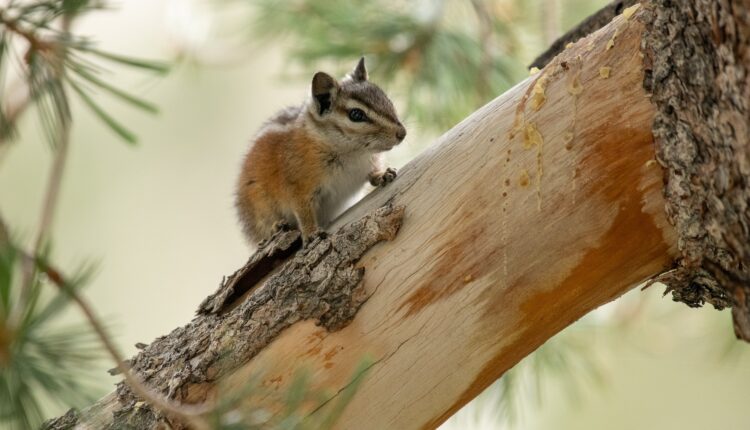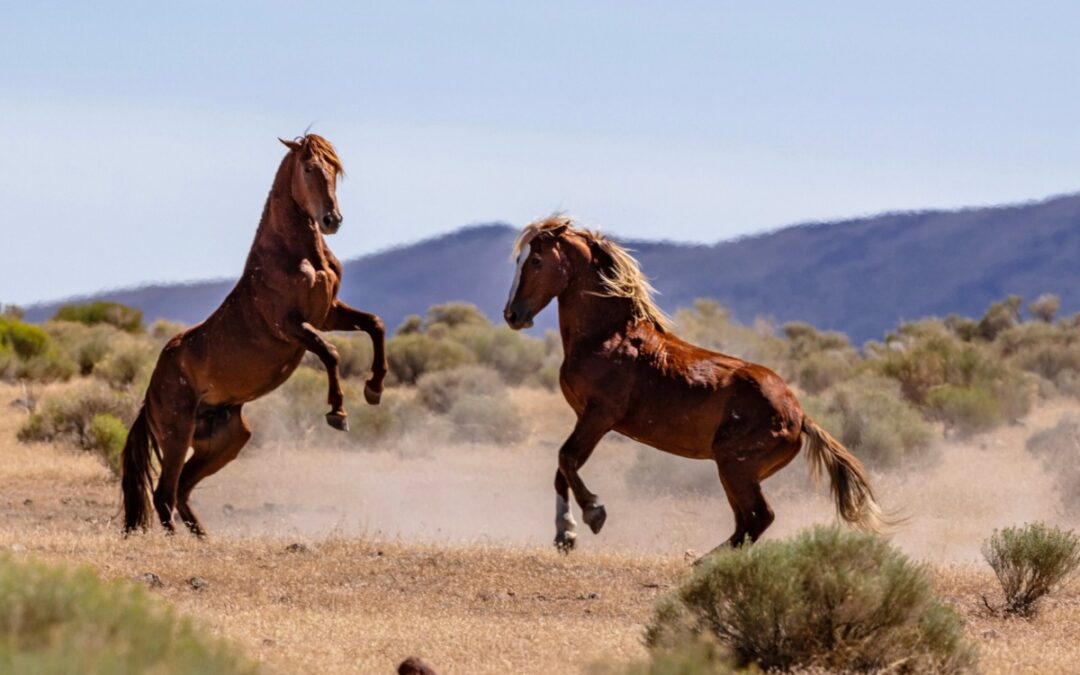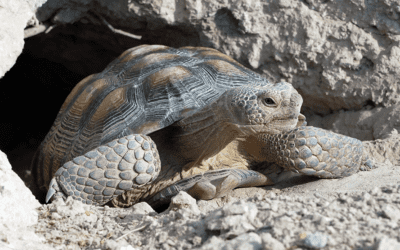
Photo courtesy of Shutterstock.
Learn more about eight endangered animals in Nevada and how you can save them from going extinct.
Nevada is largely desert, but it is also quite biodiverse with a wide range of habitats for animals and plants, including wetlands, deserts, mountains, and forests. According to the Nevada Division of Natural Heritage, the state ranks sixth in the nation for endemic species and subspecies, with a total of 309.
Unfortunately, the Silver State ranks even higher for at-risk species, coming in third with 27 federally endangered animals and 23 state-endangered animals. All in all, eight Nevada animal species have gone extinct.
Among the endangered animals in Nevada are amphibians, reptiles, birds, fish, insects, and even mammals. Here’s a closer look at some of these animals as well as tangible ways you can make a difference.
Nevada animals on the brink of extinction
1. Dixie Valley Toad
With a hidden habitat in the Great Basin’s Dixie Valley Playa, this big-eyed, black-freckled toad is the smallest of all the western toads. It was the first U.S.-based toad species discovered in five decades when found in 2017.
Sadly, the 760-acre springs-fed wetlands where it lives are endangered by the development of a geothermal plant, as well as invasive species, disease, climate change, groundwater extraction, and livestock grazing.
What’s being done: In 2017, the Center for Biological Diversity began working with the U.S. Fish and Wildlife Service to protect the toads under the Endangered Species Act. Protections were finalized in 2022 and the Center, along with the Fallon Paiute-Shoshone Tribe, won an injunction to halt the project in 2022.
2. Ash Meadows Amargosa Pupfish
The Ash Meadows Amargosa pupfish is a small, shiny silver-gray to silver-blue minnow that lives among 10 springs – all critical habitats – within Ash Meadows National Wildlife Refuge in southwest Nevada. It is one of five subspecies of pupfish and 24 plants and animals found in the refuge (and nowhere else on Earth).
What’s being done: The United Nations has designated Ash Meadows as a Ramsar Wetland of International Importance and the pupfish are protected under the Endangered Species Act. In 2023, the Bureau of Land Management halted a proposed lithium mine exploration project at the edge of Ash Meadows in response to a lawsuit by the Center for Biological Diversity and the Amargosa Conservancy.
3. Devils Hole Pupfish
A small fish without pelvic fins, this critically endangered species is found only in the 92-degree water of Devils Hole, a water-filled cavern that extends into a hillside east of Death Valley in the Amargosa Desert. The males are a bright metallic blue while the females and juveniles are yellow. With a lifespan of around one year, the females don’t produce many eggs, and survival from egg to adulthood is low.
Devils Hole pupfish have been threatened many times over the years due to groundwater depletion, loss of prey species, and human actions. It also doesn’t help that in 2016, three men broke into the protected area and smashed pupfish eggs and larvae, among other disruptions.
What’s being done: The Ash Meadows Fish Conservation Facility has been working on maintaining a refugee population of pupfish. As of 2021, scientists counted 191 Devils Hole pupfish–the most fish observed in 25 years.
4. Bonytail Chub
The rarest of the endangered, endemic fish in the Colorado River, the bonytail chub may have evolved up to 5 million years ago. This elegant minnow has large fins and a streamlined body with a gray or olive-colored back, silver sides, and a white underbelly. It can reach a length of 22 inches and live up to 50 years.
Listed as endangered in 1980, the species is threatened by several factors including streamflow regulation, habitat modification caused by dams, hybridization, and competition and predation by non-native fish.
What’s being done: Ongoing recovery efforts led to reintroducing hatchery-reared bonytail chub in both the upper and lower Colorado River basins.
5. Cui-ui
Endemic to Pyramid Lake (and previously Winnemucca Lake) in northwest Nevada, this big sucking fish has a long, broad head with coarse scales and a blackish-brown to bluish-gray body, and creamy-white on its belly. The fish can weigh up to nearly eight pounds, reach more than two feet in length, and live up to 40 years.
The cui-ui plays an important role in the culture of the Pyramid Lake Paiute Tribe. Though its numbers have increased in recent years, its outlook is uncertain. Some research shows that spawning has been unsuccessful due to unfavorable water quality.
What’s being done: The Pyramid Lake Paiute Tribe of the Pyramid Lake Reservation has three hatcheries. The U.S. Environmental Protection Agency, Truckee River spawning grounds, the Nevada Department of Environmental Protection, and the EPA are also involved in recovery efforts.
6. Carson Wandering Skipper
This rare brown-to-yellowish-orange butterfly has only two populations in the world, one of which is located in the grasslands of Washoe County, Nevada. It is at risk due to livestock grazing, off-road vehicle activity, encroaching development, gas and geothermal development, changes in the water table, pesticide drift, and non-native plant invasion.
What’s being done: Listed as endangered in 2002, the U.S. Fish and Wildlife Service is said to be taking measures to conserve the butterfly species in Nevada and California.
7. Mount Charleston Blue Butterfly
With a short lifespan of only one to two weeks, the Mount Charleston blue butterfly is a rare but beautiful site from July to mid-August. The males are lilac-blue with a brown border while the females are darker blue with orange, blue, and black spots. They are usually viewed in Bristlecone woodlands or mixed conifer forests above 6,500 feet.
What’s being done: Fences have been installed in the Spring Mountain National Recreation Area to help restore and protect the butterflies’ habitat by protecting the plants they rely on for food. It is suggested that visitors to the area watch their step, keep a distance from the butterflies, and not pick any flowers or plants.
8. Palmer’s Chipmunk
Endemic to the Spring Mountains in Southern Nevada, these small tan rodents have long tails and white and black stripes on their backs. They inhabit ground burrows in cliffs and forested areas in mountainous habitats. As omnivorous foragers, they have many predators and usually live between one and four years.
Because they live in extreme conditions, their breeding and foraging may be limited, which may contribute to their endangered status. Also, their habitat is being reduced due to predators, new campgrounds, and increased urban sprawl in Las Vegas.
What’s being done: The Palmer’s Chipmunk’s habitat is being closely watched and protected by the Bureau of Land Management and the U.S. Forest Service.
Making a difference for endangered animals in Nevada
Are you interested in protecting endangered animals? Here are a few ways that you can help keep them from going extinct and aid in their recovery efforts:
- Volunteer with the Nevada Wildlife Department (NDOW) or National Oceanic and Atmospheric Administration (NOAA) on various projects such as fish sampling, hunter education, and nesting surveys.
- Report wildlife harassment to the NOAA 24-hour hotline: 1(800) 853-1964.
- Report a stranded or injured marine animal here.
- Make informed shopping decisions. Don’t support stores that sell items made from an endangered or threatened species. Also, don’t buy these items.
- Download apps like WWF Together (from the World Wildlife Foundation) and the Endangered Animals Smart Guide to learn more about endangered species.
- To document a sighting of an endangered animal in Nevada or elsewhere, try the free iNaturalist app.
This article first appeared on Good Info News Wire and is republished here under a Creative Commons license.

Promulga el Condado Clark nuevas reglas para mejorar el bienestar animal y reducir la población en refugios
El Condado Clark anunció el martes 4 de febrero de 2025 algunos cambios y adiciones importantes al código municipal, enfocados en abordar la cría...

Bureau of Land Management prepares for major wild horse gather in Nevada
The Bureau of Land Management will begin a wild horse gather in Nevada's Triple B Complex on Nov. 1, 2024, aiming to manage the herd size and...

Go Batty: October is Bat Appreciation Month
While Halloween is undoubtedly the biggest jewel in October’s crown, there’s another reason to celebrate it: October is Bat Appreciation Month....

Exige Las Vegas el uso de microchips en mascotas; multas y cárcel para infractores
A partir del 1 de agosto, todos los perros y gatos de cuatro meses o más dentro de los límites del Ayuntamiento de Las Vegas deben tener un...

Dog-friendly hotels in Las Vegas, Baker, Tonopah, Ely, and Baker
When it comes to traveling for some of us, our dogs are like our American Express — we can’t leave home without them. Fortunately, when we hit the...

Mojave Max salió de su madriguera en el Springs Preserve
La aparición de la tortuga del desierto local marca el comienzo de la primavera. Mojave Max, la famosa tortuga del desierto que “anuncia” la llegada...





